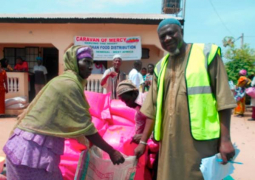Ndey S. Bakurin, Director of Inter-Sectoral Network at the National Environment Agency, has spoken of sound environmental practices for the country.
The environmental activist was speaking at the opening of a one-day workshop on raising awareness to encourage enforcement of natural resources sustainable use within the Tourism Development Area (TDA) and in protected areas at Gunjur West Coast region.
The National Environment Agency (NEA), in collaboration with Gambia Tourism Authority, is currently implementing on behalf of the Gambia Government, a project on Collaborative Actions for Sustainable Tourism (COAST) Project.
The Director of Inter-Sectoral Network at the NEA has said that the objectives of the Collaborative Actions for Sustainable Tourism (COAST) project is to demonstrate best practices and strategies to reduce the degradation of marine and coastal environments of trans-boundary significance, and to enhance sustainable tourism practices.
The project also aims at demonstrating best practices and strategies to reduce the degradation of marine and coastal environments of trans-boundary significance, and to enhance sustainable tourism practices.
Pa Fansu Bojang, representative of the Alkalo of Gunjur, welcomed the participants and thanked the NEA and relevant stakeholders for the opportunity to conduct an awareness workshop in Gunjur.
Momodou Suwareh, Senior Programme Officer, Coastal and Marine Environment, NEA, dilated on the importance of fisheries resources management.
Ousainou Touray of the Department of Parks and Wildlife Management (DPWM) expatiated on the significance of biodiversity management.
Lamin Njie of the Department of Forestry (D.O.F) buttressed the treasures of the country’s coastal natural resources such as the mangroves ecosystem, biodiversity and marine resources.
He elaborated on the negative consequences of drought and climate change and thus underscored the warranty of establishing sustainable management rules based on best practices and broad consultation of relevant stakeholders.
Meanwhile, Fatou Janha, president of TRY Oysters, highlighted the importance of oyster farming and the innovative applications of new techniques.
She said her organisation has intervention sites at Wenchu, Kamalang, Jeshwang, Fajikunda,
Dawda Badjie, Senior Programme Officer, Environmental Impact Assessment at the NEA, unequivocally made clear the threats caused by coastal sand mining.
Meanwhile, the Development Officer of the GTA, Sang Sylva, elaborated on Tourism’s contribution/ benefits in natural resource management, the impacts of the benefits, the impacts of human activity on the unsustainable use of natural resources, and the adaptation of mitigation/enforcement measures, to name a few.
Thereafter, the Programme Officer for Coastal & Marine Environment at the NEA, Famara Drammeh, underscored the significance of proper coordination of natural resources, coastal and marine resources, protection and networking.
According to the project, coordinator Abubacarr Kujabi, who is also the Assistant Programme Officer for Coastal and Marine Environment Unit of the NEA, the long-term goal of the project is to support and enhance the conservation of globally significant coastal and marine ecosystems, and associated biodiversity in sub-Saharan Africa, through the reduction of negative environmental impacts which they receive as a result of coastal tourism.
The countries involved in the implementation of the regional coastal protection project include
According to the project coordinator in The Gambia, the project has three intervention Demo sites, namely


